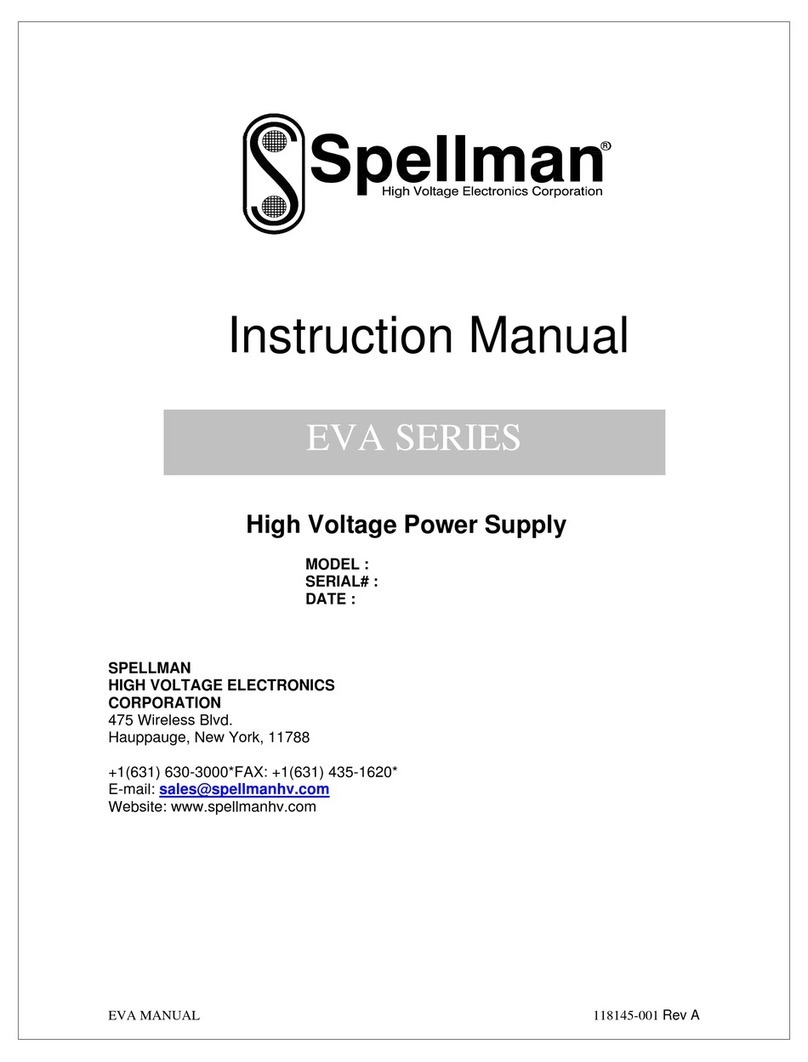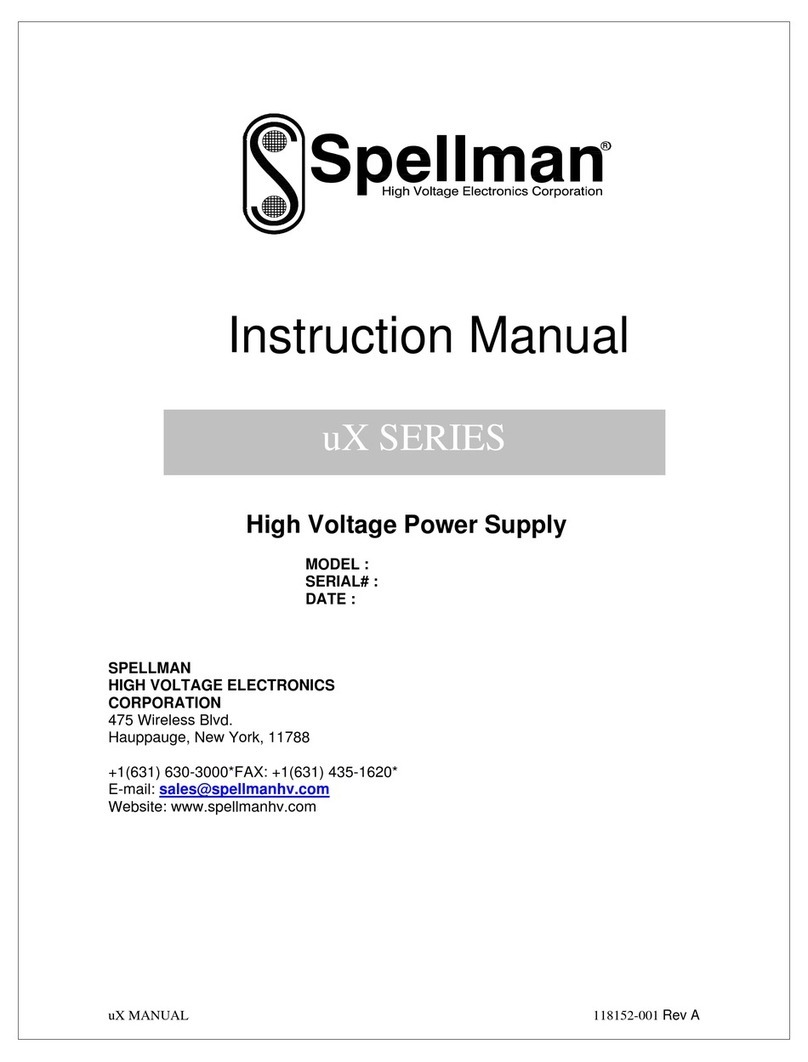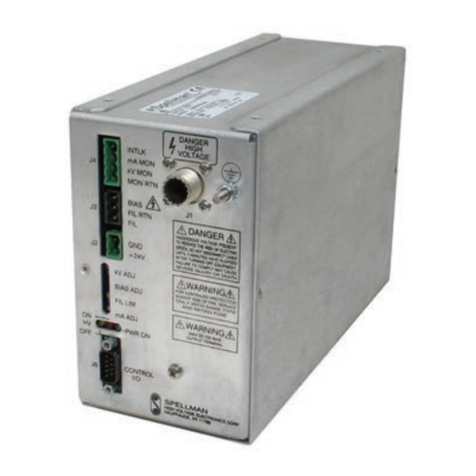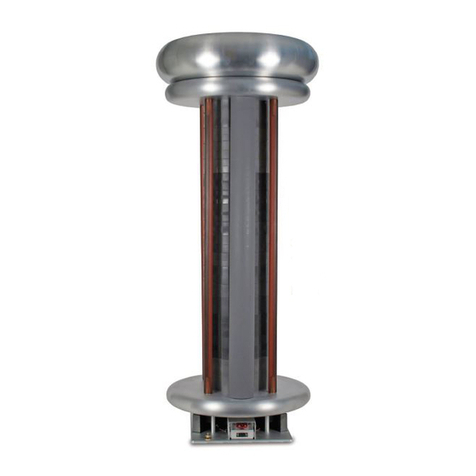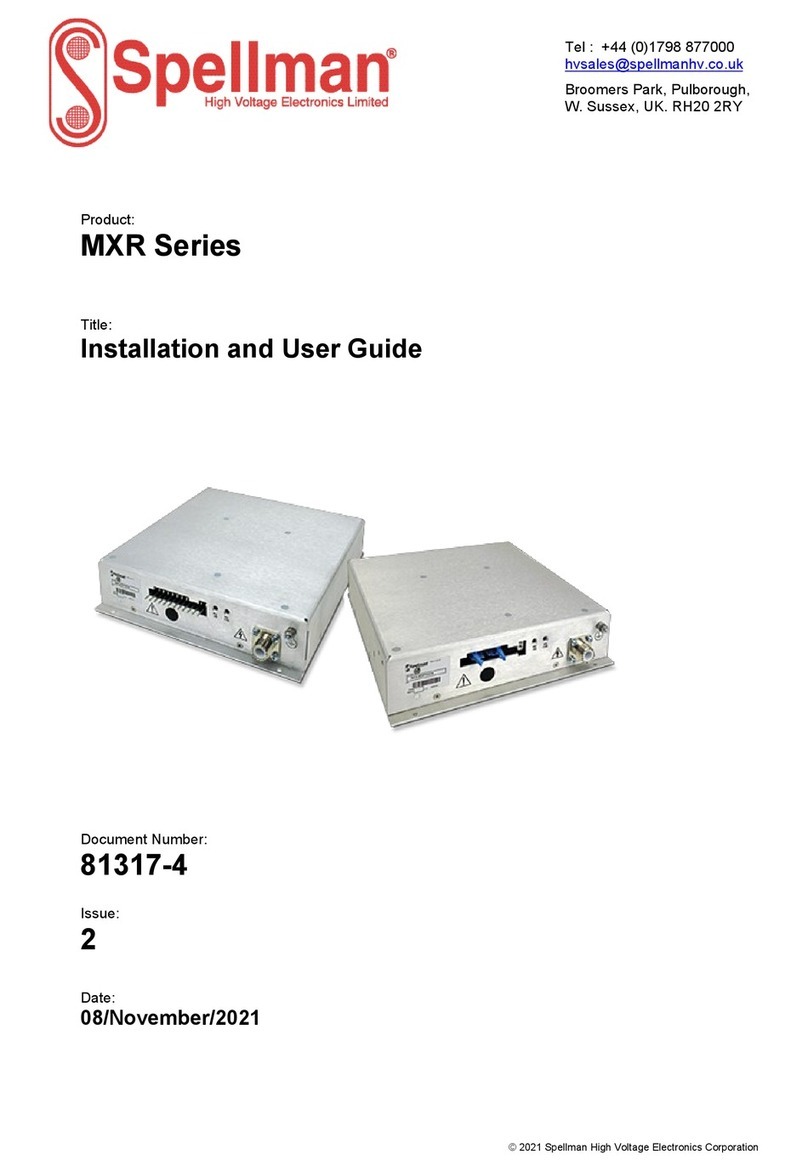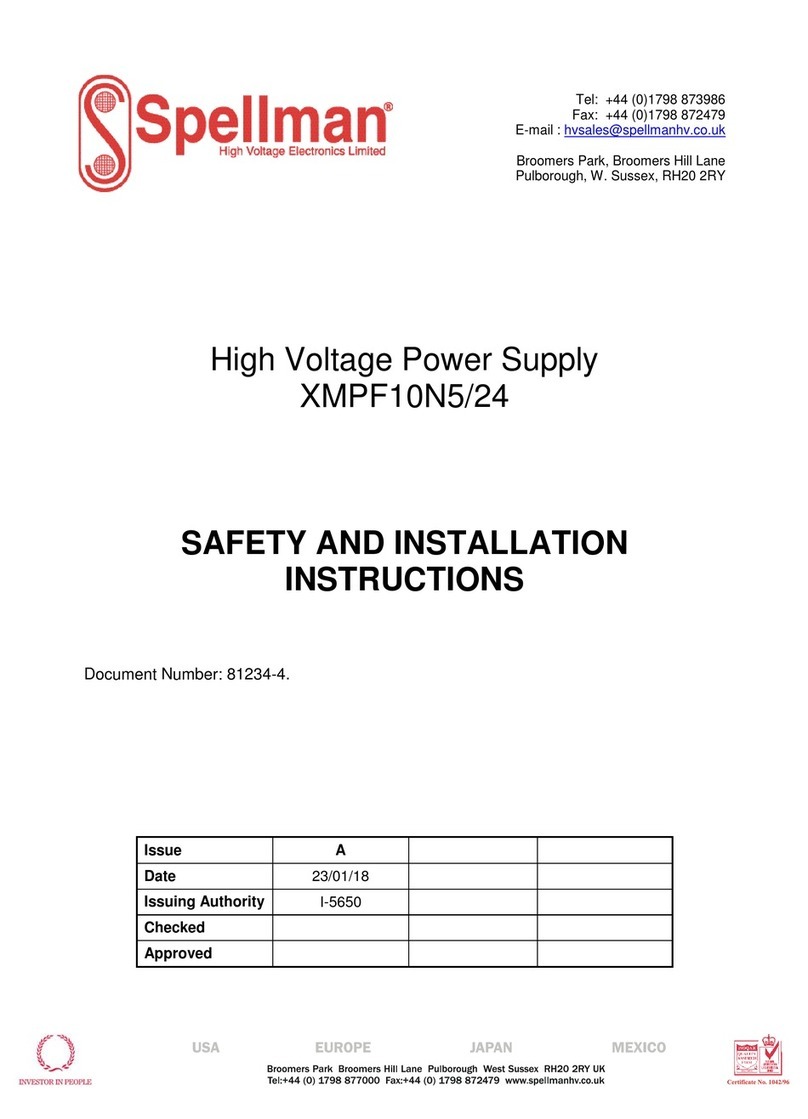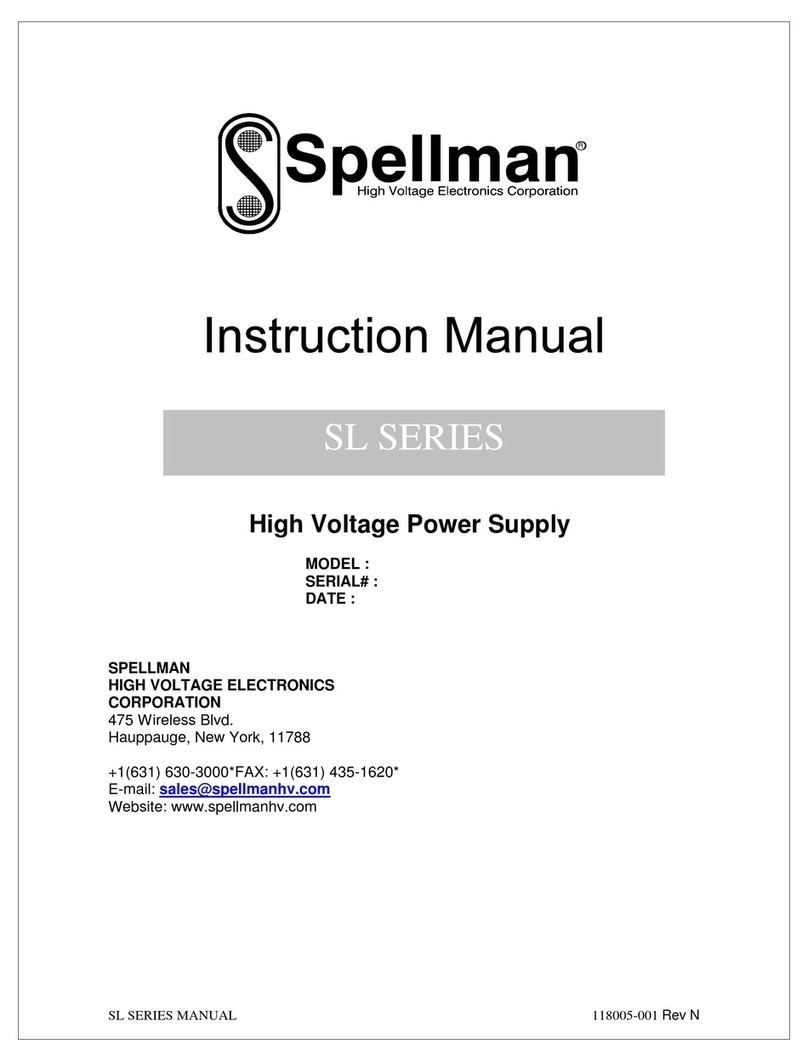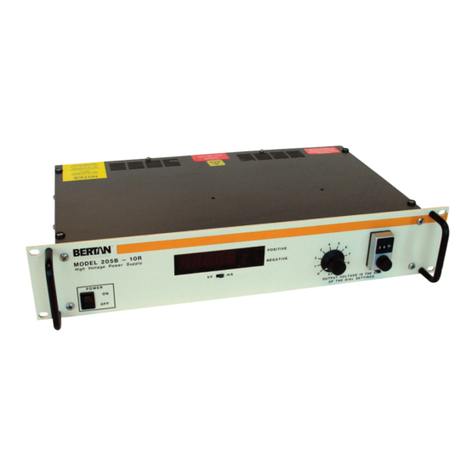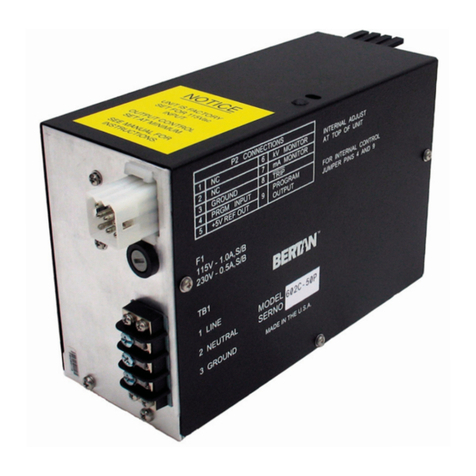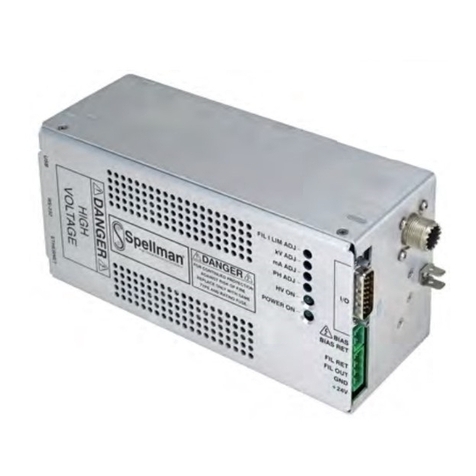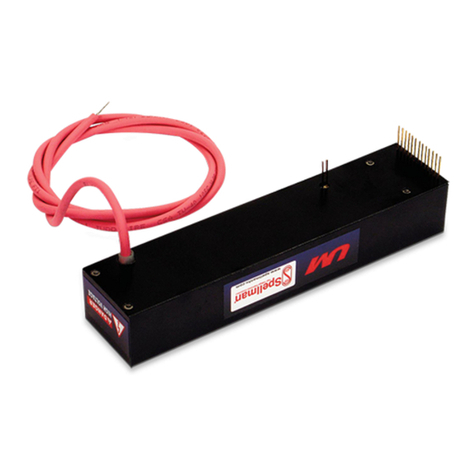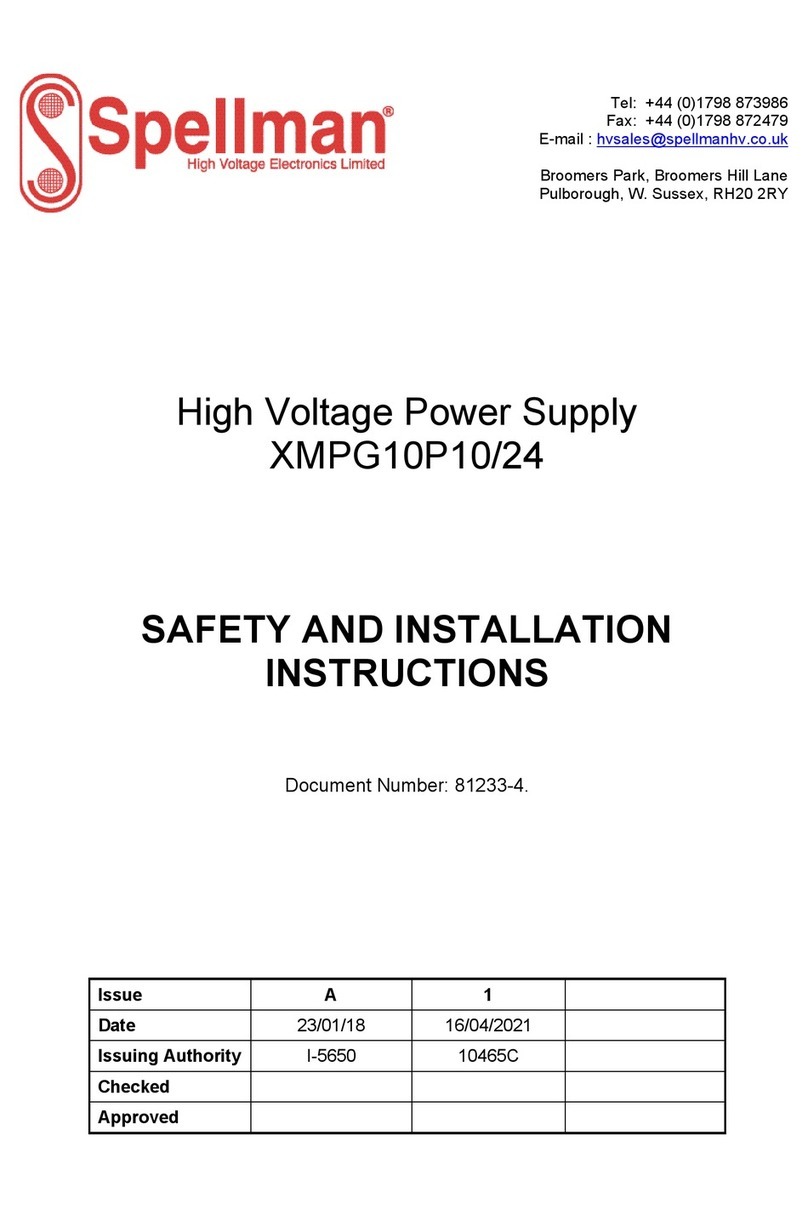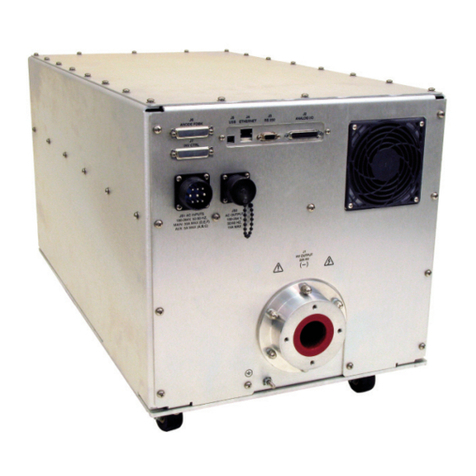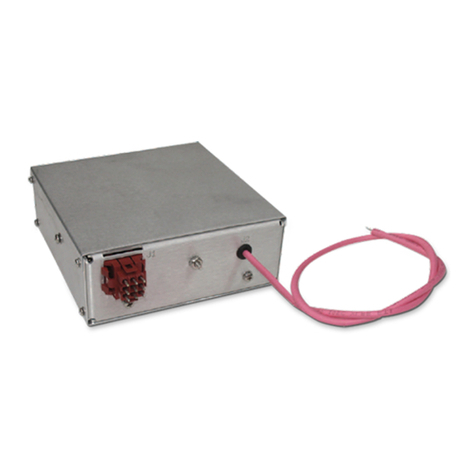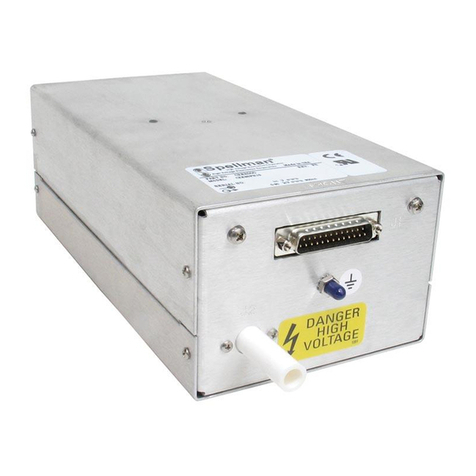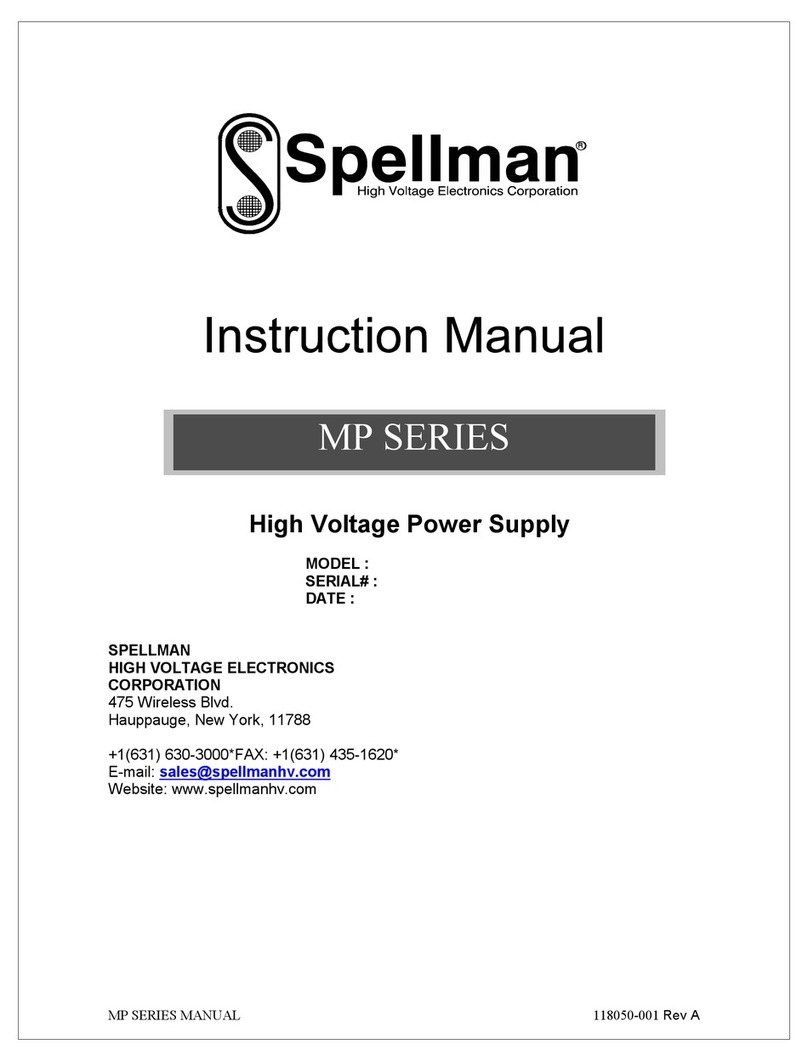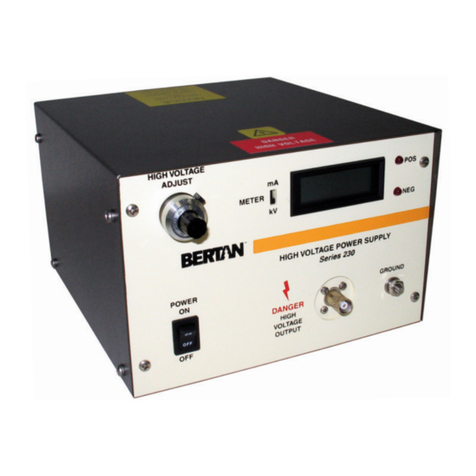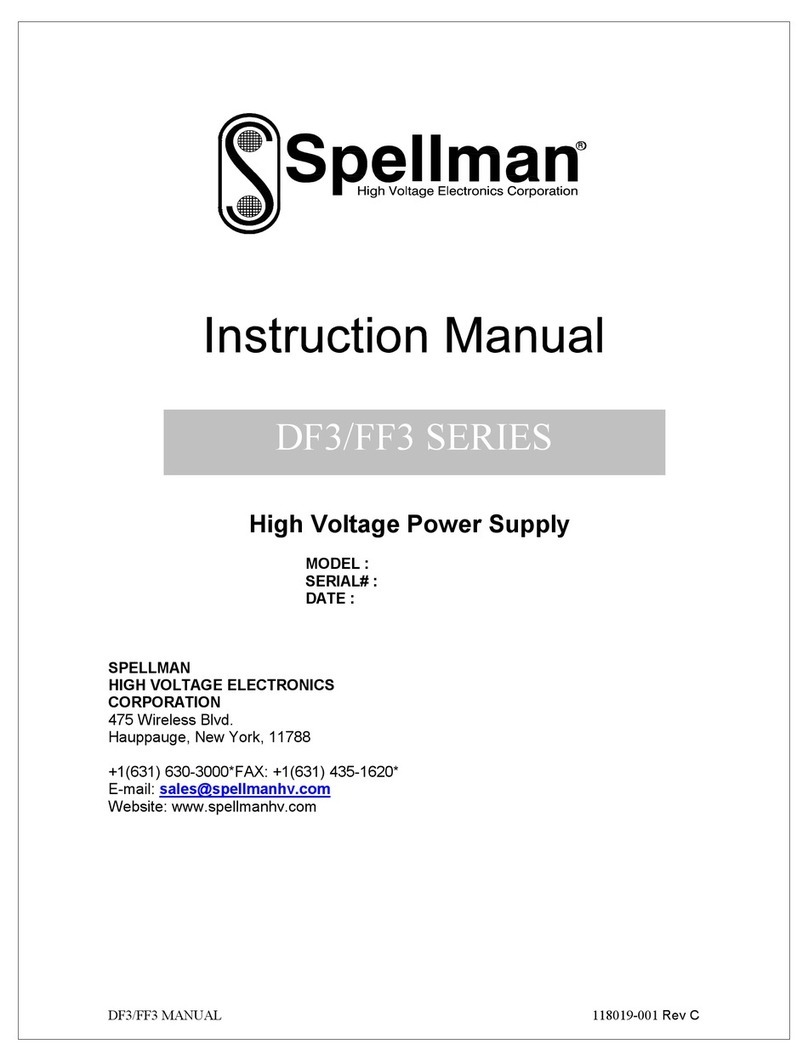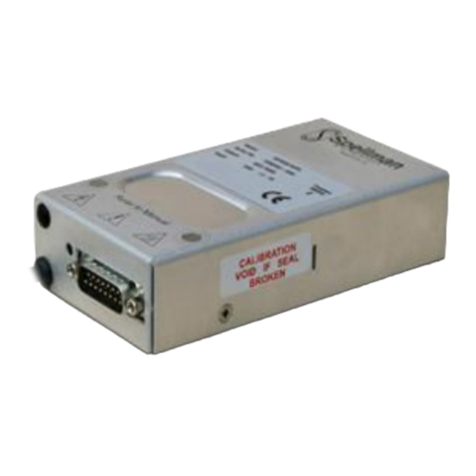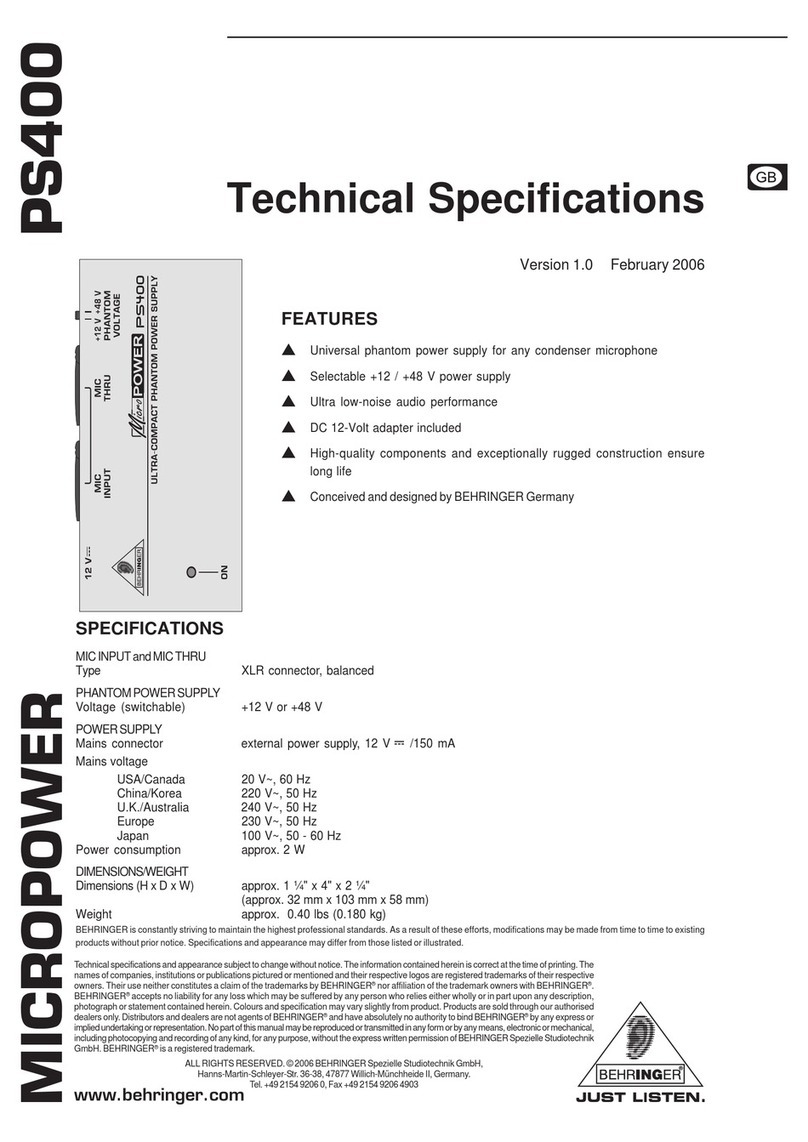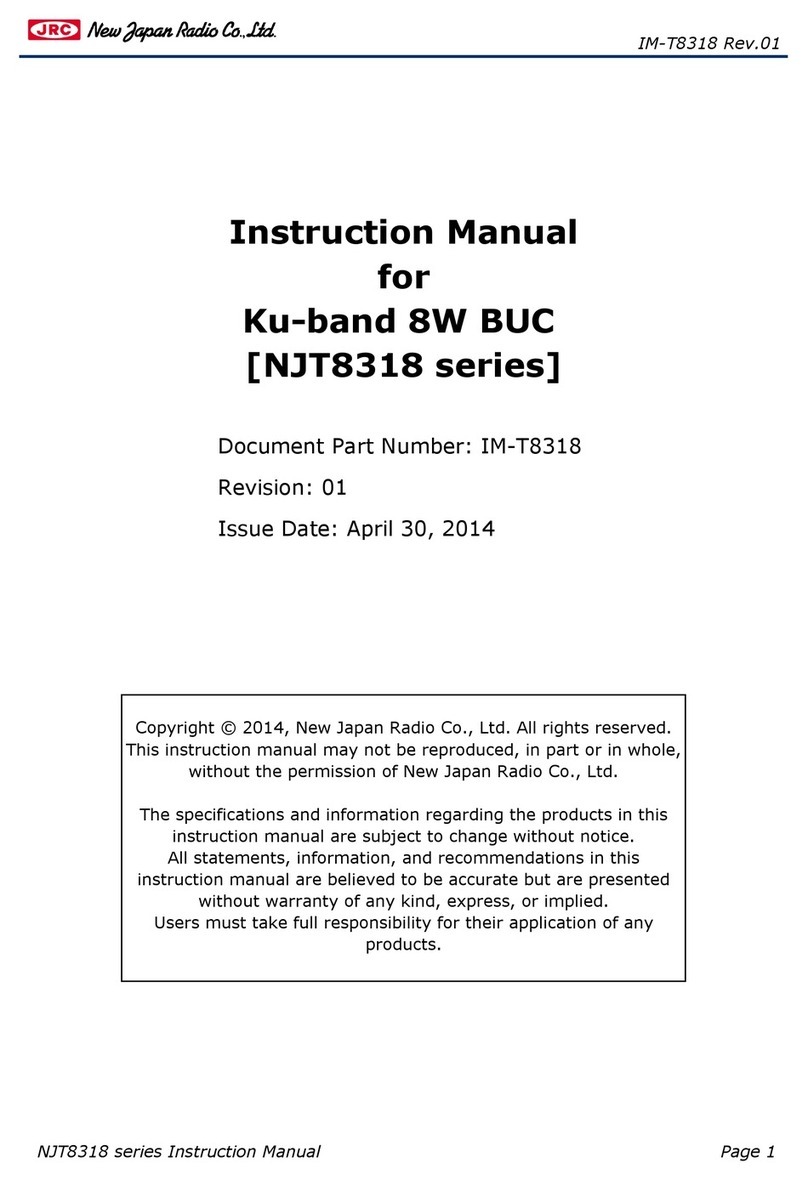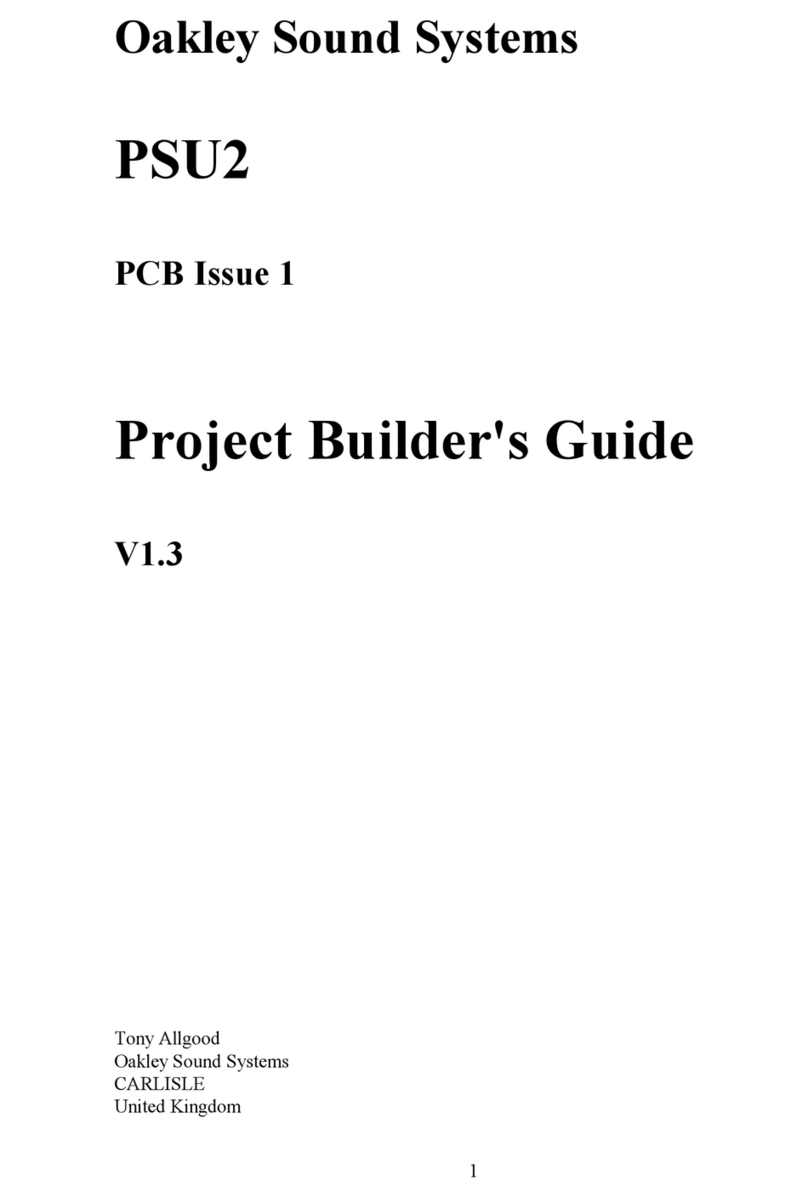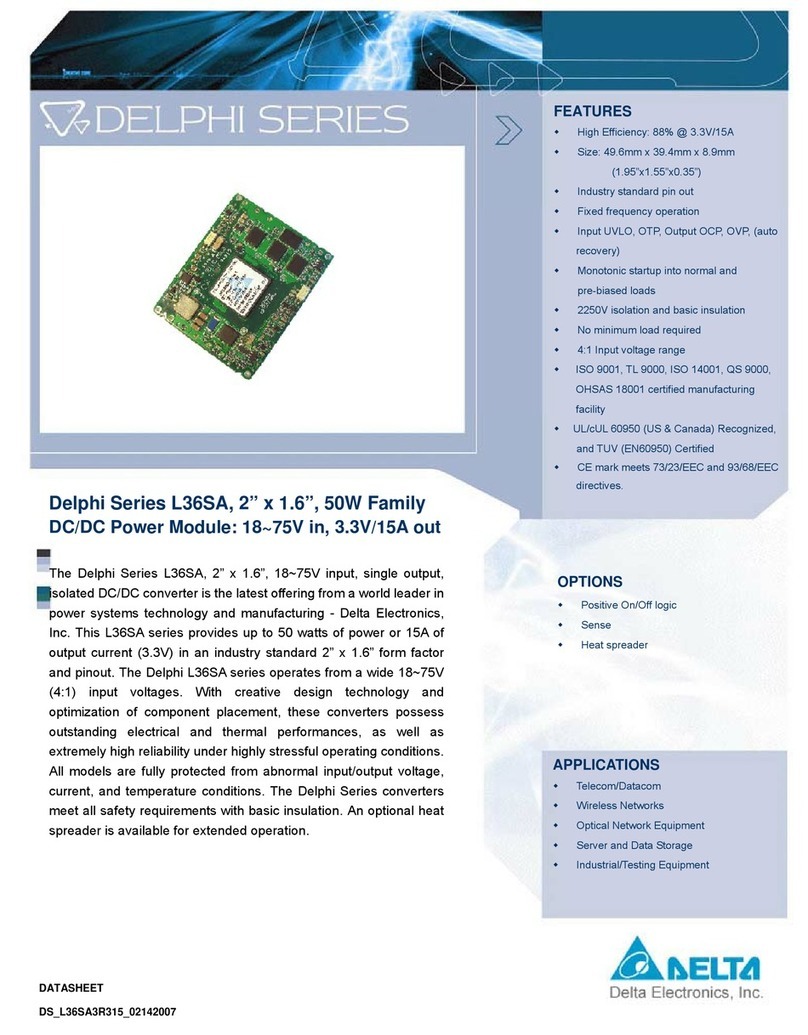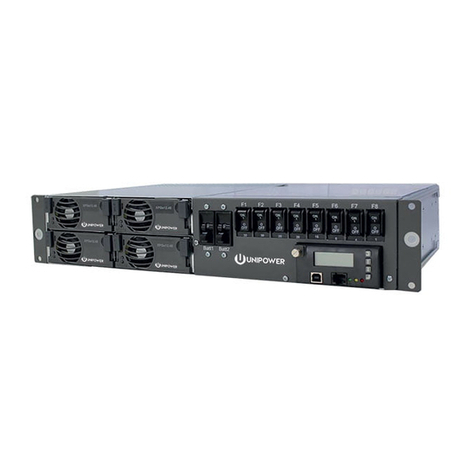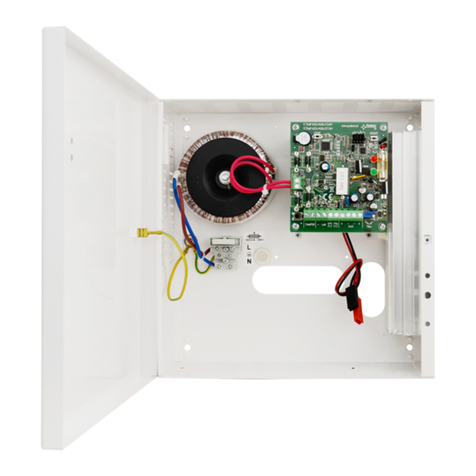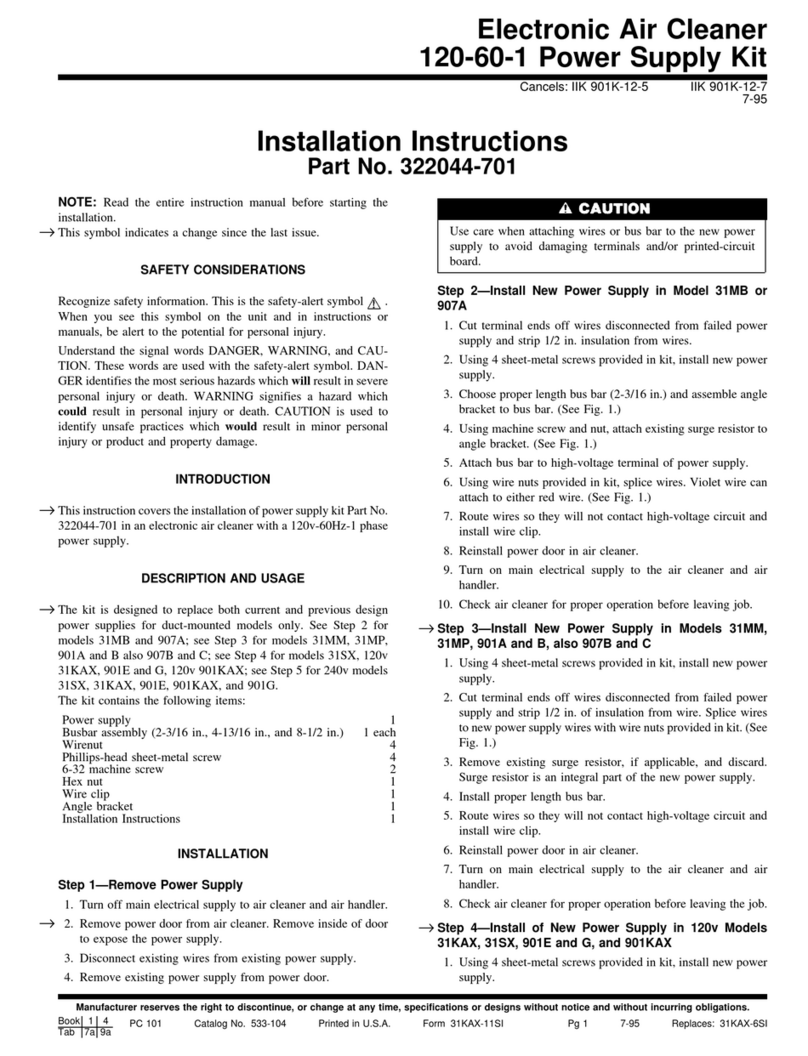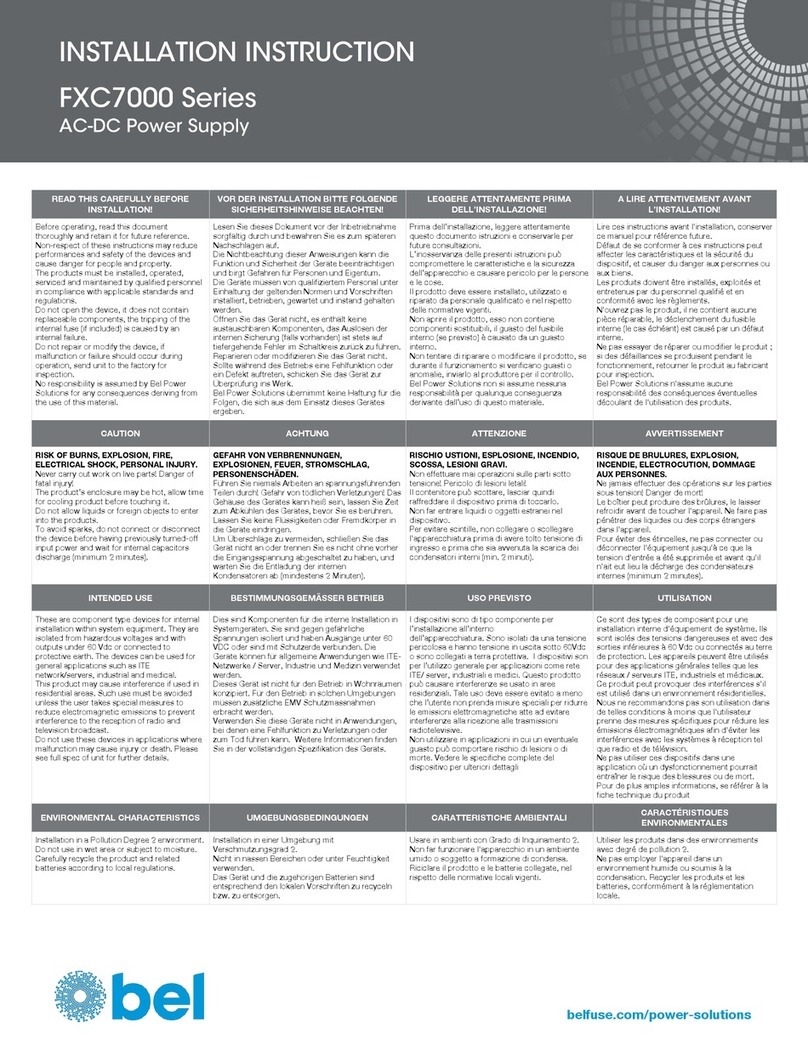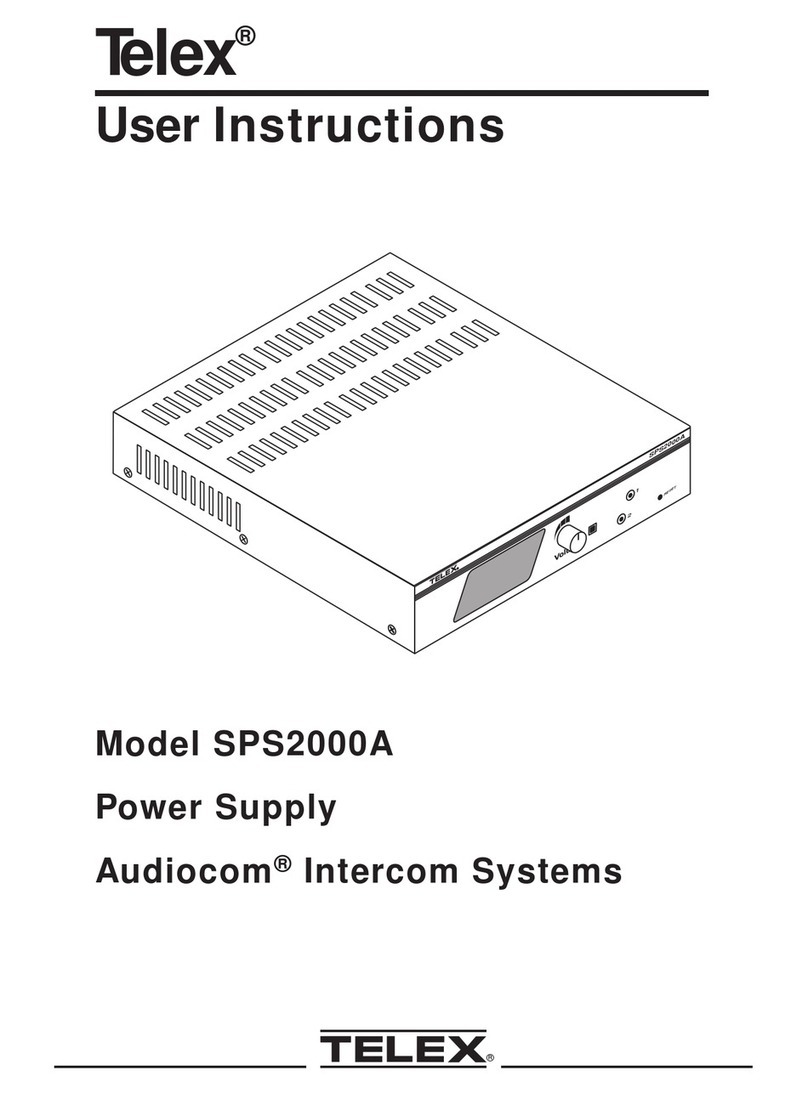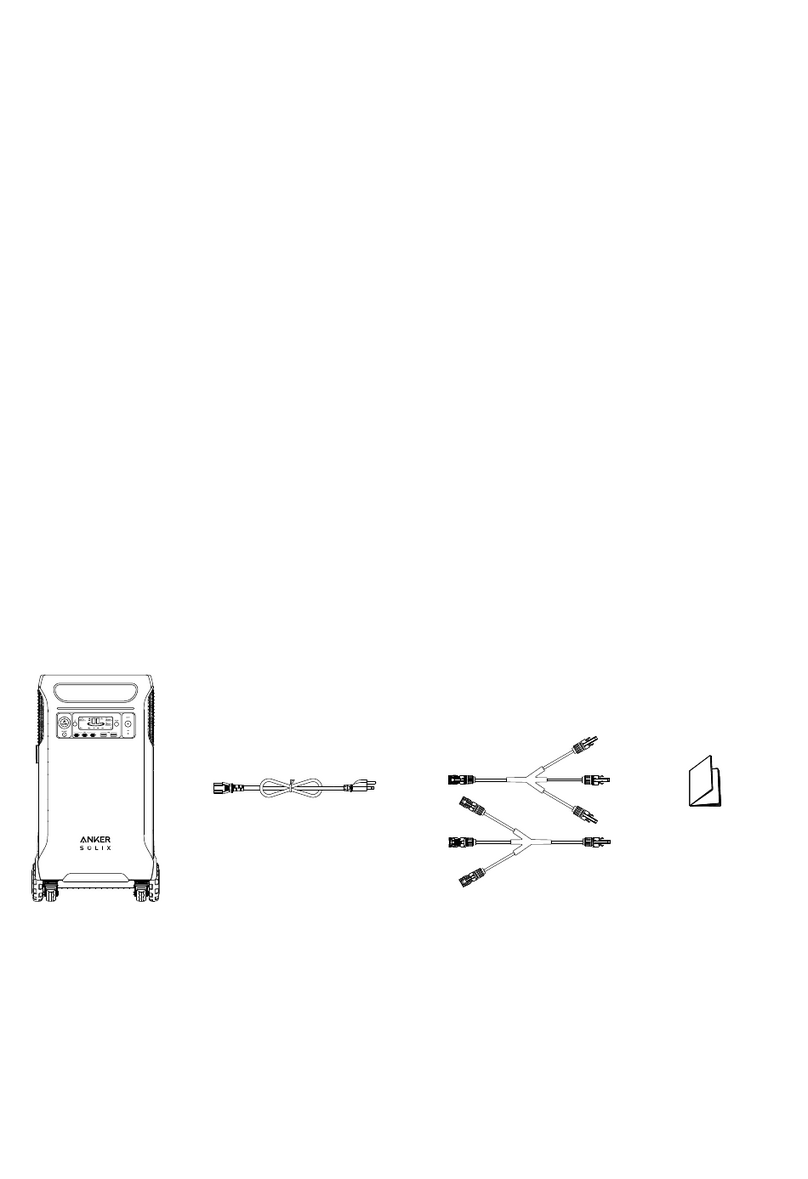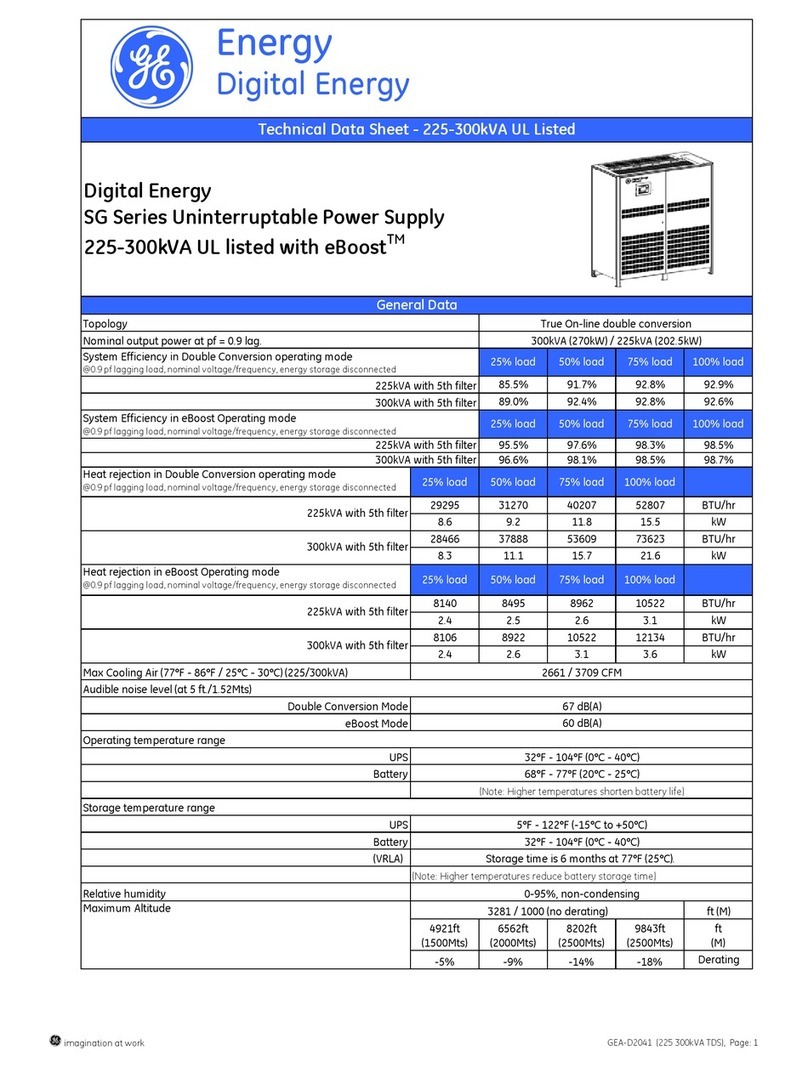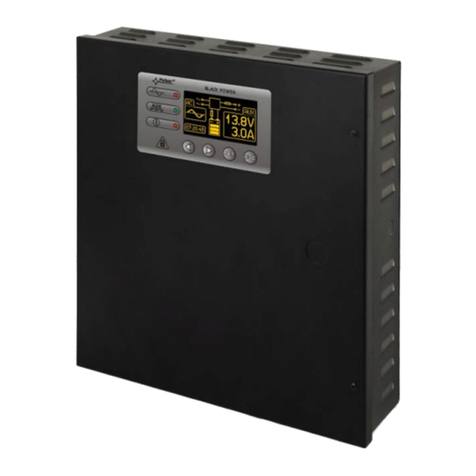
PTV MANUAL 10 118012-001 REV B
Chapter 4
PRINCIPLES OF OPERATION
he PTV Series of high voltage power supplies utilizes
sophisticated power conversion technology.
Advanced analog and power conversion techniques
are used in the PTV series. The intention of the
Principles of Operation is to introduce the basic function
blocks that comprise the PTV power supply. For details
on a specific circuit, consult Spellman’s Engineering
Department.
The PTV power supply is basically an AC to DC power
converter. Within the power supply, conversions of AC
to DC then to high frequency AC, then to high voltage
DC take place.
Typical PTV power supplies comprise a few basic
building blocks. These are: 1) AC to DC rectifier,
2) High frequency quasi-resonant inverter, 3) High
voltage transformer and rectifier circuits, and 4) Control
and monitoring circuits. The following is a brief
description of each building block.
4.1 AC to DC Rectifier and
Associated Circuits
The PTV series can operate from 115VAC +/- 10% or
220VAC +/- 10%. (Alternate input voltage ranges can be
accommodated. Consult Spellman’s Sales Department
for details).
The input voltage is connected via a typical IEC 320 type
input connector. An internal EMI filter and fuse housing
is an integral part of the IEC input module.
WARNING
To reduce the risk of fire, replace fuse
with same type and rating.
The input line voltage is applied to a current limit device
to reduce the initial inrush current. The input line voltage
is converted to a 300VDC voltage via a bridge
rectifier/capacitor filter circuit.
On newer PTV modules a 300VDC indicator neon lamp
is provided inside the unit to indicate the presence of
voltage.
The input AC line voltage is also connected to a step-
down transformer, which is used to generate +/- 24VDC,
+/- 15VDC, and 10VDC via low voltage regulators.
WARNING
The energy levels used and generated by the
power supply can be lethal! Do not attempt to
operate the power supply unless the user has a
sufficient knowledge of the dangers and hazards
of working with high voltage. Do not attempt to
approach or touch any internal or external
circuits or components that are connected or
have been connected to the power supply. Be
certain to discharge any stored energy that may
be present before and after the power supply is
used. Consult IEEE recommended practices for
safety in high voltage testing #510-1983.
4.2 High Frequency Inverter
The PTV is a resonant converter operating in a zero
current switching, series resonant, parallel loaded
topology. MOSFET transistors switch the 300 VDC
voltage to the resonant tank circuit. Typical operating
frequency is in the range of 35-65KHz depending on
model. Control of the resonant circuit output is done by
the low voltage control circuits, and are isolated by an
isolated pulse transformer. The output of the resonant
circuit is applied to the primary of the high voltage
transformer.
4.3 High Voltage Circuits
The high voltage transformer is a step-up type. The
secondary of the high voltage transformer is connected to
the high voltage rectifier circuit. The rectifier circuit will
vary depending upon the rated output voltage. For lower
output voltage, a full bridge or doubler circuit is used.
For higher voltages, a half wave Cockroft-Walton
multiplier is used. A feedback signal is generated by the
high voltage resistor divider. This feedback signal is sent
to control circuits to provide voltage regulation and
monitoring. A current sense resistor is connected at the
low voltage end of the rectifier circuit. The circuit sense
signal is sent to the control circuits to provide current
regulation and monitoring.
An auxiliary voltage sense signal is generated by the
overvoltage protection feedback resistor. This is used to
provide overvoltage protection.
T




















